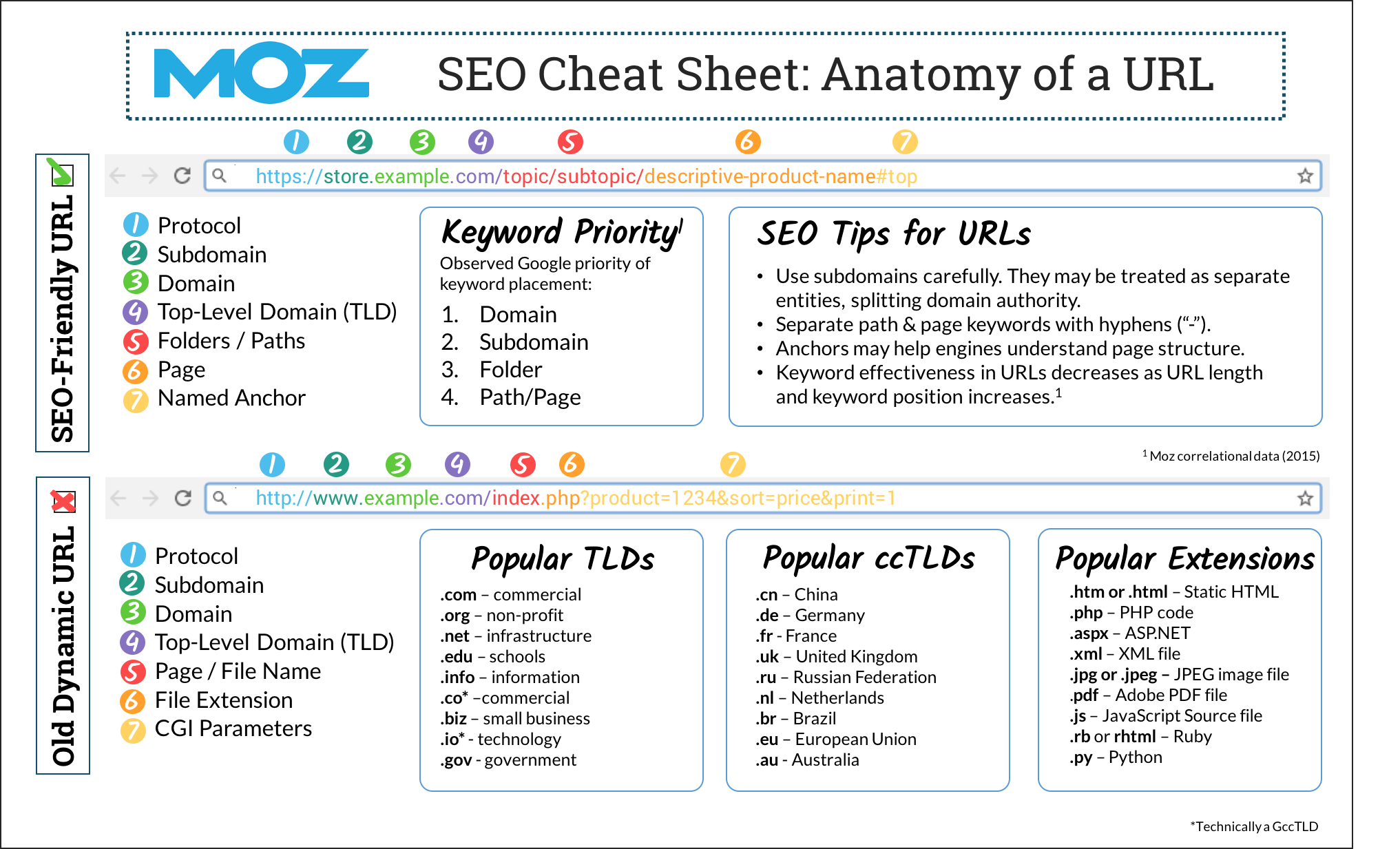It’s known that keywords in the URL play a part in website rankings, but did you know the structure of your URL is just as important?
Subdomains and subdirectories, also known as subfolders, are the two most prominent URL structures that can make your URLs SEO and User-friendly.
This infographic by Moz is a very helpful resource on SEO best practices for URLs.

There are also pros and cons to both approaches.
Let’s examine precisely what the differences between a subdomain and a subdirectory are, and then we can determine which method best suits your needs.
What is a Subdomain?
A subdomain is a segregated segment of your website used to catalog your overarching website into a series of individual sites.
You will recognize a subdomain URL by the word to the left of the primary domain name.
For example:
news.example.com or blog.example.com
The word “name” or “blog” is the subdomain of the root domain example.com

Subdomains are used to differentiate vastly unique topics on a single domain. These are often referred to as microsites because the site lacks the content to rank in search alone effectively.
For example, if your website is a How-To blog, and you have a separate section for Automotive how-tos and another section for Pet Care how-tos, you have the option to break these out by subdomains like auto.example.com and petcare.example.com to distinguish between the main topics within your website.
What are the Benefits of a Subdomain?
- A subdomain is, fundamentally, an individual site hosted on a common domain. Search engines view subdomains as unique and unrelated to the root domain; this standard of URL informs Google, Bing, and other search engines that each site should be treated as a different entity.
- Separate entities potentially mean more results in search returns. If both your primary domain and your subdomain (or subdomains) list in the top search results, you are not only giving users more opportunity to access your website, you are pushing the competition down the list.
- When running SEO tests, 100% of link juice flows through a subdomain vs. 90% with a subdirectory.
- You can integrate keywords into the URL to boost search and clarify the exact purpose of your website to users.
- Google likes to rank specialty sites more than large authority sites. Only very prominent websites, such as large news publications or retail brands can get away without using subdomains because of the sheer volume of links within their site. Good examples are Reddit and Wikipedia.
Now, let’s see what the subdirectories are all about…
What is a Subdirectory?
A subdirectory, by definition, is a directory within a directory.
It’s a digital filing system like a card catalog or file cabinet with main folders and additional folders under the original organizational scheme.
Computers use subdirectories to construct software systems, but subdirectories are also URL formats used to organize web pages.
A subdirectory always starts with a forward slash after the domain name.
For example:
www.example.com/blog/ or www.example.com/news/
The /blog/ or the /news/ are the subdirectories of the domain name example.com

If all content and keywords are substantially related to your main site, using subdirectories is the way to go.
What are the Benefits of a Subdirectory?
- Subdirectories allow your website to remain focused and streamlined. It is much easier to optimize a single website with subdirectories than multiple sub-websites under subdomains.
- It is easier to transition users between subdirectories. After reading your riveting About Me page, users can quickly hop to your blog or services page, making the user experience seamless and more enjoyable.
- It is easier to edit the code within a subdirectory. Since the code is usually all in the same filing system, it is easier to find and make changes or even move the code to another location within the primary domain.
- Subdirectories are easier to track analytically because all information is in the same area. When comparing sites and looking at site usage, an analytics platform such as Google Analytics will amalgamate the data into one place. Search robots view subdomains as separate entities, so data comparison is parsed out based on each site.
Ok, now let’s see which might work best for your website!
Should You Use Subdomains or Subdirectories for Your Website?
Pro Tip: If you are new to website building or SEO, our recommendation is to stick to using subfolders/subdirectories until you feel confident in your architectural skills and technical SEO.
Considerations
Ultimately, the choice is up to you. It is important to remember no decision is irreversible, but some choices are easier to change than others.
When deciding between subdomains and subdirectories, consider the following:
- Your long-term business goals
- Website and marketing goals
- Technical SEO
- User experience and website structure
Answering these questions will also help when deciding between subdirectories and subdomains.
- Are you locked into a single topic or theme?
- Do you have the time or finances to manage multiple sites?
- Do you have plans of grandeur to expand your business into numerous unrelated industries and have a full team to run your website?
Just remember that subdomains and subdirectories play a considerable role in your website structure, user experience and technical SEO.
So, do your research, weigh your options, and be confident in the decision you make.


